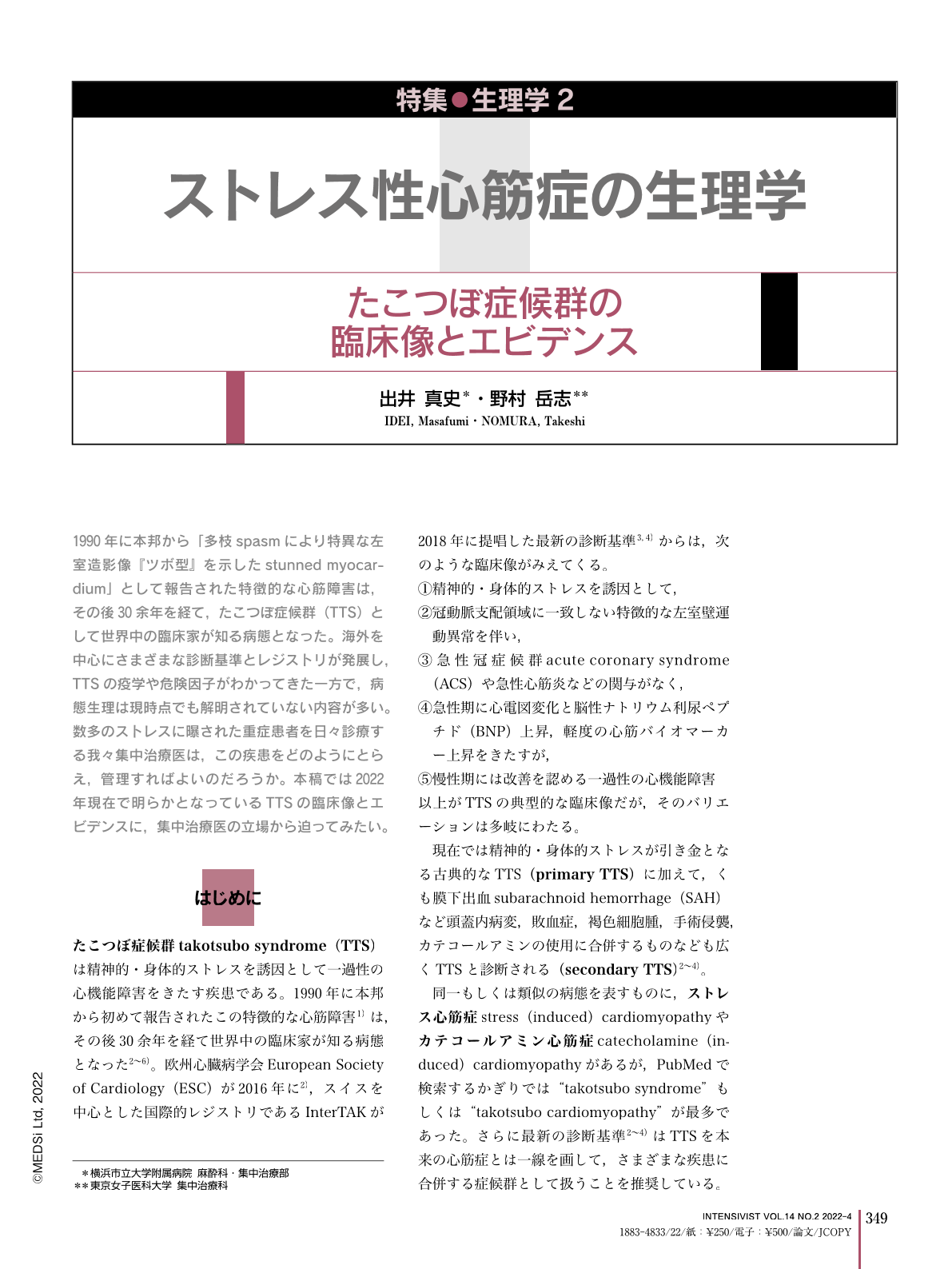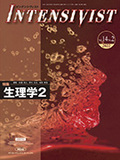Japanese
English
- 有料閲覧
- Abstract 文献概要
- 1ページ目 Look Inside
- 参考文献 Reference
1990年に本邦から「多枝spasmにより特異な左室造影像『ツボ型』を示したstunned myocardium」として報告された特徴的な心筋障害は,その後30余年を経て,たこつぼ症候群(TTS)として世界中の臨床家が知る病態となった。海外を中心にさまざまな診断基準とレジストリが発展し,TTSの疫学や危険因子がわかってきた一方で,病態生理は現時点でも解明されていない内容が多い。数多のストレスに曝された重症患者を日々診療する我々集中治療医は,この疾患をどのようにとらえ,管理すればよいのだろうか。本稿では2022年現在で明らかとなっているTTSの臨床像とエビデンスに,集中治療医の立場から迫ってみたい。
In 1990, a characteristic myocardial disorder was reported from Japan as “stunned myocardium with a unique left ventricular angiographic image of a “tsubo” shape due to multi-vessel spasm”. Over the past 30 years, this characteristic myocardial disorder has become known to clinicians around the world as Takotsubo syndrome (TTS). While various diagnostic criteria and registries have been developed, mainly overseas, and the epidemiology and risk factors for TTS have been clarified, the pathophysiology of TTS remains to be elucidated. How can we intensivists, who treat critically ill patients exposed to a multitude of stresses on a daily basis, understand and manage this profound disease? In this article, we will discuss the clinical features and evidence regarding TTS as of 2021 from the perspective of an intensivist.

Copyright © 2022, MEDICAL SCIENCES INTERNATIONAL, LTD. All rights reserved.


